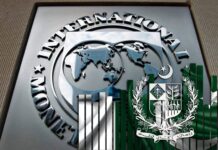Ever wondered why the rupee quotes at 108.20 or 110 and not at Rs120 or Rs125 to a dollar? It’s not much different from how the prices of mangoes are determined, for example, whether currency movements or prices of mangoes, the most important factor determining their price is the same – market forces of demand and supply. If the demand for dollars increases, the value of the dollar will appreciate.
As the quotation for PKR/$ is a two-way quote, that is, the price of one dollar is quoted in terms of how much rupees it takes to buy one dollar, an appreciation in the value of the dollar would automatically mean a depreciation in Pak Rupee and vice versa. Besides the primary powers of demand and supply, the rupee-dollar rates are determined by other market forces as well such as market sentiments, speculation, central bank intervention, import/exports, public debt, fiscal policy and interest rates most commonly amongst the others.

The combination of the above circumstances has contributed to the fall in the value of the rupee vis-a-vis the US dollar as it has been predictable to a considerable extent with a promising upward trend since 1947.
Pakistan’s near-term growth outlook is amongst the most favourable of all economies in the MENAP region. Initial estimates of FY2017 growth had seen an expansion of 4.9% y/y in real terms, although the central bank recently upgraded this projection to 5.7%. This compares well to an average rate of growth since 2008 of 3.6%.
Remittances peak behind us
Despite this broadly favourable macroeconomic outlook, there are several issues that relate to the economy’s external position. The outlook for remittances is a case in point, which account for almost 7% of GDP – compared to 5.6% for MENA and 3.8% for South Asia altogether. In FY2016/17 remittance inflows came in at $19.6bn, which is just under the total value of all goods exported at a value of $21.7bn.
Most recent data shows declining remittances (measured on a three month on month basis average to dampen volatility) that constitutes towards five consecutive months of contraction. Looking ahead the main concern is the source of these imports, with roughly 60% originating in the GCC. In this respect, there are two primary risks that underpin Pakistan might have seen it’s ‘peak remittances’.
First, the pace of growth across the non-oil economies of the GCC has recently settled on to a lower trajectory, implying less growth in demand for expatriate labour.
Second, and perhaps more importantly, there are also policy initiatives underway which could actually lead to a decline in the overall number of expats employed in the Gulf in the near term. This category would include the recent decision to lift the ban on women driving in Saudi Arabia (implying less demand for expat drivers), in addition to Oman’s most recent push to rapidly boost employment of nationals.

Many economists have argued in favour of remittances holding Pakistan intact, terming it as the backbone of our economy but this cautious outlook for remittances places in a broader concern about the external position of the country in FY2017/18. In Q2 2017 the current account deficit surged to USD4.4bn, compared to USD1.0bn in the same time a year earlier. More up to date figures show the value of imports increasing 18% y/y in August, marking the eighth consecutive month of double-digit growth. Persistent pressure on Pakistan’s stock of forex reserves meanwhile suggests that capital inflows have not been sufficient to cover this shortfall.
Several issues with external position
These external pressures are being exacerbated by the government’s reluctance to allow greater exchange rate flexibility. Having experienced a ‘mini-devaluation’ earlier this year, which was subsequently reversed and blamed on miscommunication, the rupee has since been held at USD105/PKR. Although allowing the currency to depreciate in line with fundamentals would certainly help boost the competitiveness of the external sector, if history is any guide, policymakers could certainly allow forex reserves to be nearly depleted before changing course.

Recent efforts at curbing the deficit by attempting to clamp down on luxury goods imports are unlikely to fundamentally change the trajectory of the economy’s external position.
There is a high chance that the improved policy environment in the recent years could have been on account of Pakistan’s previous IMF agreement, which concluded in 2016. Whether any reform momentum can be sustained without this IMF anchor is questionable at this stage. A rupee devaluation is widely expected in the next few months, and for the domestic buyer, this has already been factored in. The Pakistan stock market peaked in March and since then has corrected by 22 percent, making it one of the worst performing emerging market in this year.
Investments too have decreased from Pakistan in the backdrop of an arguably artificially stabilized rupee along with an asset boom in the local real estate and property market. However, recently the political instability coupled with the fears of devaluation on the horizon has sparked a flight of capital back into places like Dubai and the UK. The International Monetary Fund has warned that the Pakistan rupee is overvalued by 15 to 20 percent. During this time of extreme pressure on the external sector, a dollar brawler seems inevitable.






